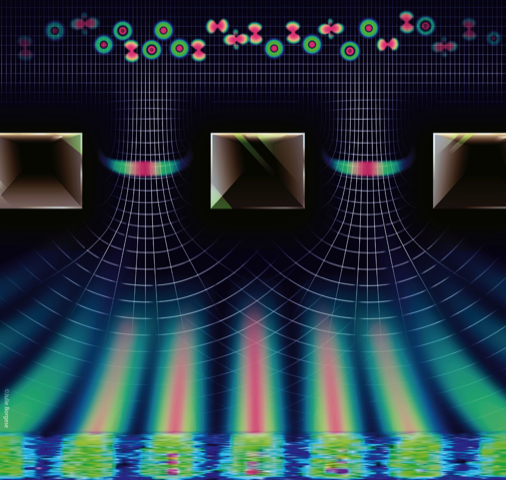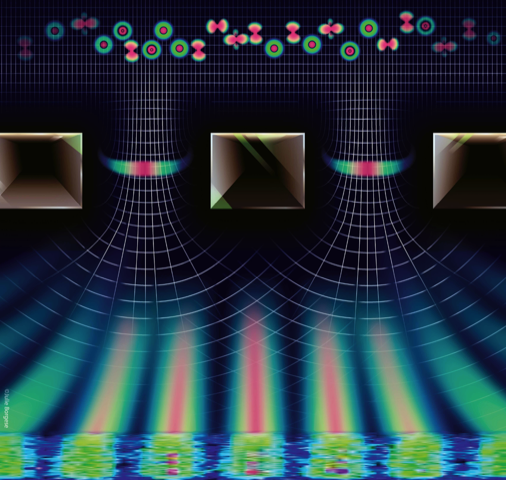Close Passes Give Atoms Tiny Quantum Kicks
In 1948, Dutch physicists Hendrik Casimir and Dirk Polder predicted that an atom near the surface of a polarizable material will experience a small force arising from quantum fluctuations of the electromagnetic field reflecting from the surface. At short distances, the force predicted by this Casimir-Polder model is close to that predicted by an approximate model called the van der Waals interaction, making it difficult to distinguish between the two experimentally. Gabriel Dutier of Sorbonne Paris North University, France, and colleagues have now developed a more precise technique to measure the force between atoms and a solid surface and have found that the magnitude of this force matches the Casimir-Polder rather than the van der Waals interaction [1].
The researchers fired beams of argon atoms through a diffraction grating etched into a 100-nm-thick silicon nitride membrane and measured the resulting diffraction spectra. The intensities of such spectra are strongly dependent on the atoms’ positions and velocity with respect to the grating’s slits and are therefore a sensitive probe of any forces affecting the atoms. To take advantage of this sensitivity, Dutier and colleagues had to slow the argon atoms to about 20 m/s using lasers and magnets. They also had to control the grating’s thickness and slit width with nanometer-scale precision.
Comparing their measured spectra to theoretical models, the researchers found that the Casimir-Polder interaction became distinguishable for atoms that passed through the grating less than 51 nm from the sides of the slits. Within this distance, the van der Waals prediction differed from the measured force by 15%. The researchers say that the technique could allow precision force sensors based on the Casimir-Polder effect.
–Sophia Chen
Sophia Chen is a freelance science writer based in Columbus, Ohio.
References
- C. Garcion et al., “Intermediate-range Casimir-Polder interaction probed by high-order slow atom diffraction,” Phys. Rev. Lett. 127, 170402 (2021).





